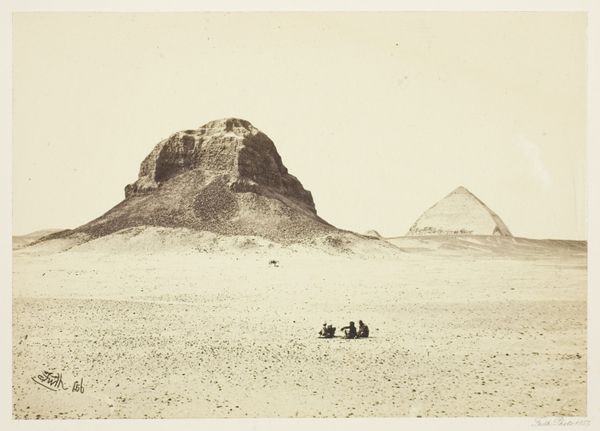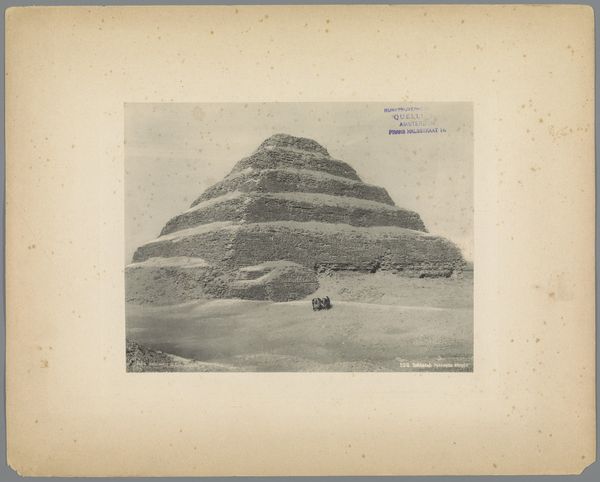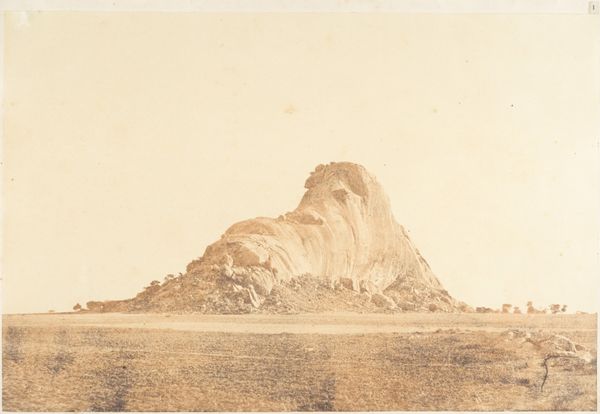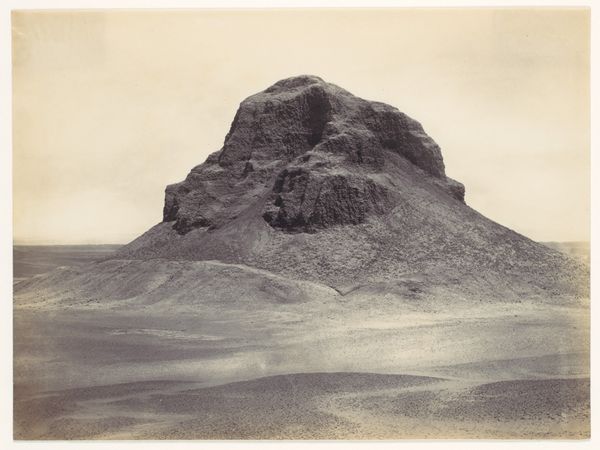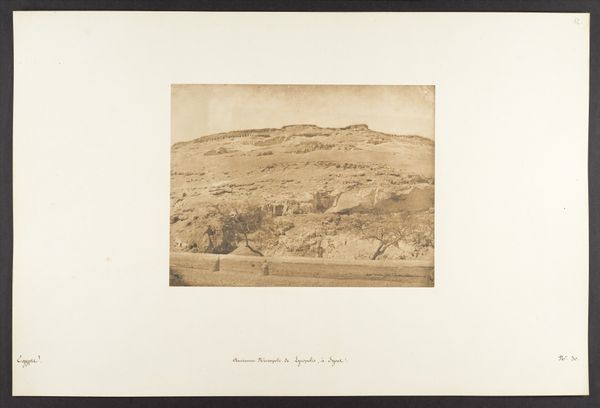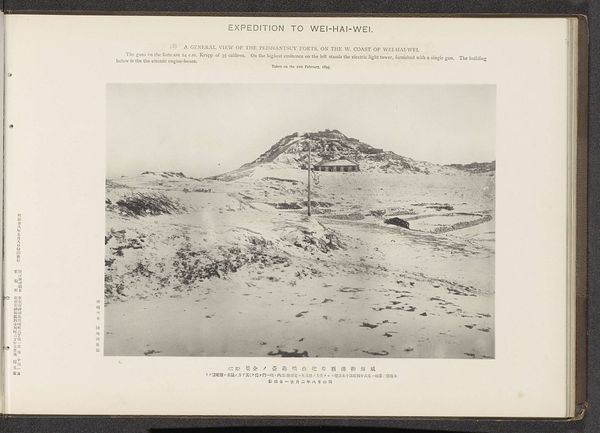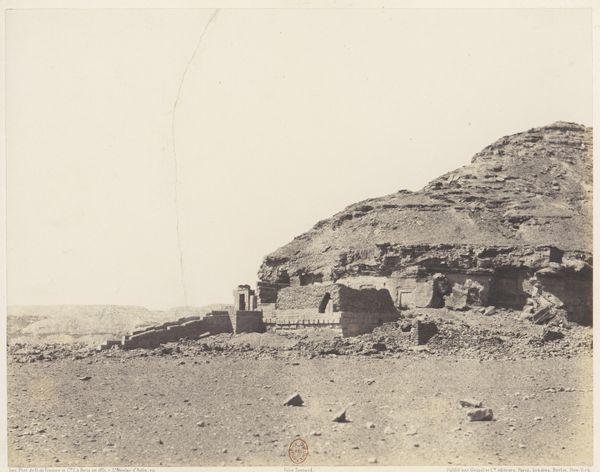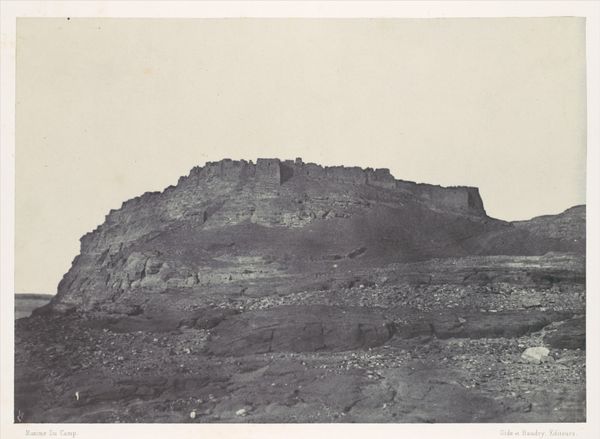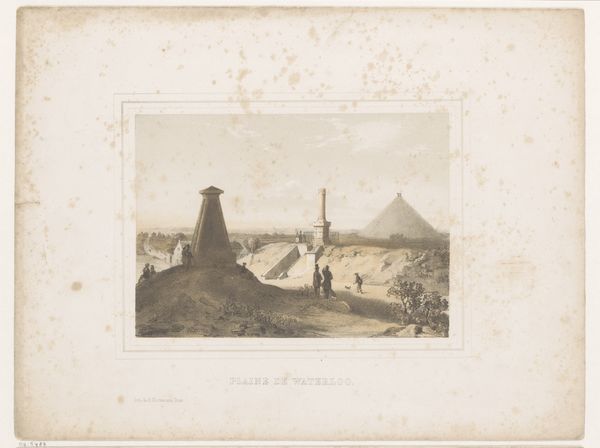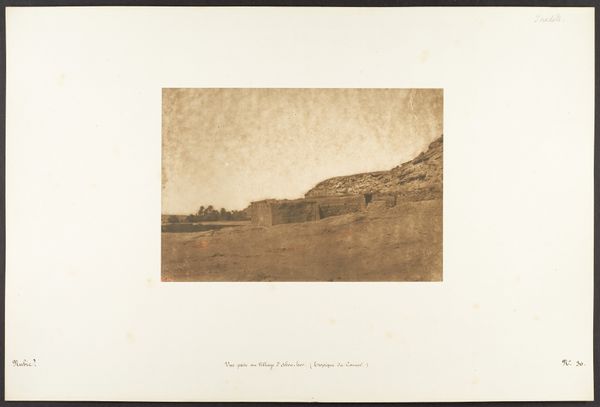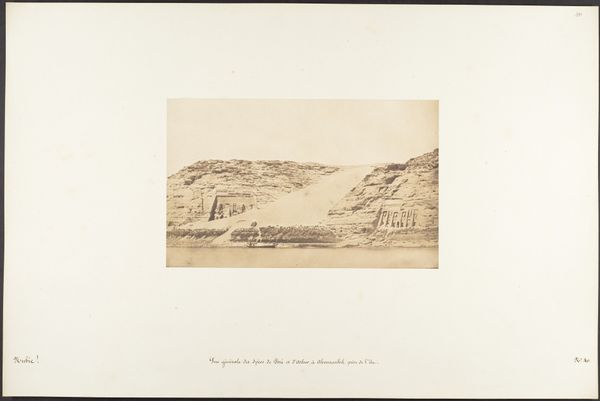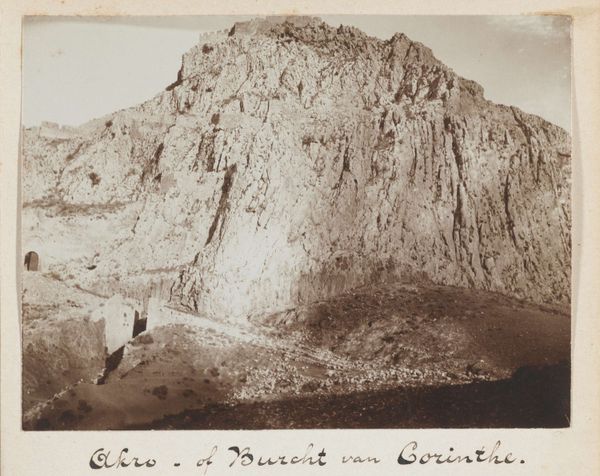
photography, gelatin-silver-print, albumen-print
#
landscape
#
ancient-egyptian-art
#
photography
#
ancient-mediterranean
#
orientalism
#
gelatin-silver-print
#
albumen-print
Dimensions: height 242 mm, width 312 mm
Copyright: Rijks Museum: Open Domain
Curator: This albumen print from between 1856 and 1859 by Francis Frith captures the Pyramid of Amenemhat III at Dashur in Egypt. Editor: It strikes me immediately as a photograph about scale and the immensity of history, rendered in sepia tones. There's a powerful contrast between the colossal pyramid and the figures at its base. Curator: Absolutely, the choice of albumen print, a process involving coating paper with egg white, gives it that characteristic tonal range and subtle texture. You really get a sense of the desert light. We must consider that Frith sought to document these sites using what were cutting-edge photographic techniques to both portray and perhaps further the goals of orientalism. Editor: Yes, looking closely, the formal composition leads the eye directly up the pyramid's face. The erosion of its surface creates a play of light and shadow that accentuates its geometric structure. I see Frith using a rigorous pictorial structure that is more than simply documentary. Curator: And what’s remarkable is how Frith manages to convey not just the sheer scale of this ancient monument, built originally from mud bricks, but also the intense labor involved in its construction and now, its decay and integration back into the landscape from whence it came. Editor: But what of the relationship between its decay and what feels like, to me, Frith’s own contemporary moment of technical and aesthetic construction. The pyramids were popular photographic subjects, but few captured both monumentality and temporality so effectively. Curator: Exactly, this wasn't just a visual record but a cultural product, made accessible through mass production and distribution of the prints. This photograph collapses space and time, bringing the ancient world to Victorian audiences. Editor: Reflecting on Frith's method, this photograph isn't simply a historical document but also an object deeply embedded in cultural and material conditions. Curator: Agreed, considering it was disseminated widely, its meaning became entwined with narratives of empire, exoticism and knowledge production. A photograph both beautiful and freighted with cultural baggage.
Comments
No comments
Be the first to comment and join the conversation on the ultimate creative platform.
